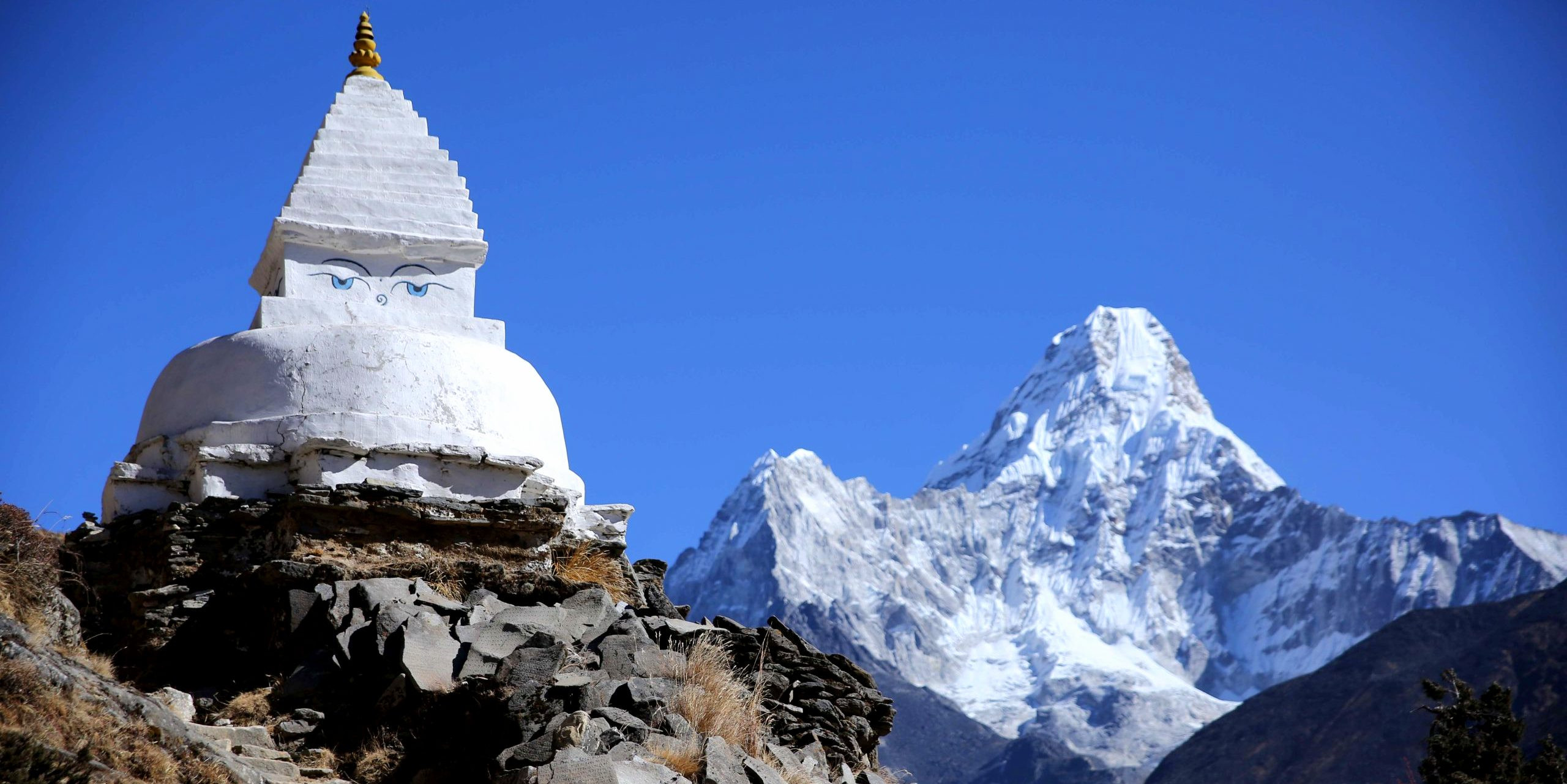Upper Mustang
Upper Mustang, often called the "Last Forbidden Kingdom," is a remarkable destination filled with ancient Tibetan culture, breathtaking landscapes, and a sense of mystical wonder. Located in northern Nepal, this secluded region remained closed off from the world until the early 1990s, offering visitors a rare opportunity to experience traditional Tibetan life that has stayed largely untouched for centuries.
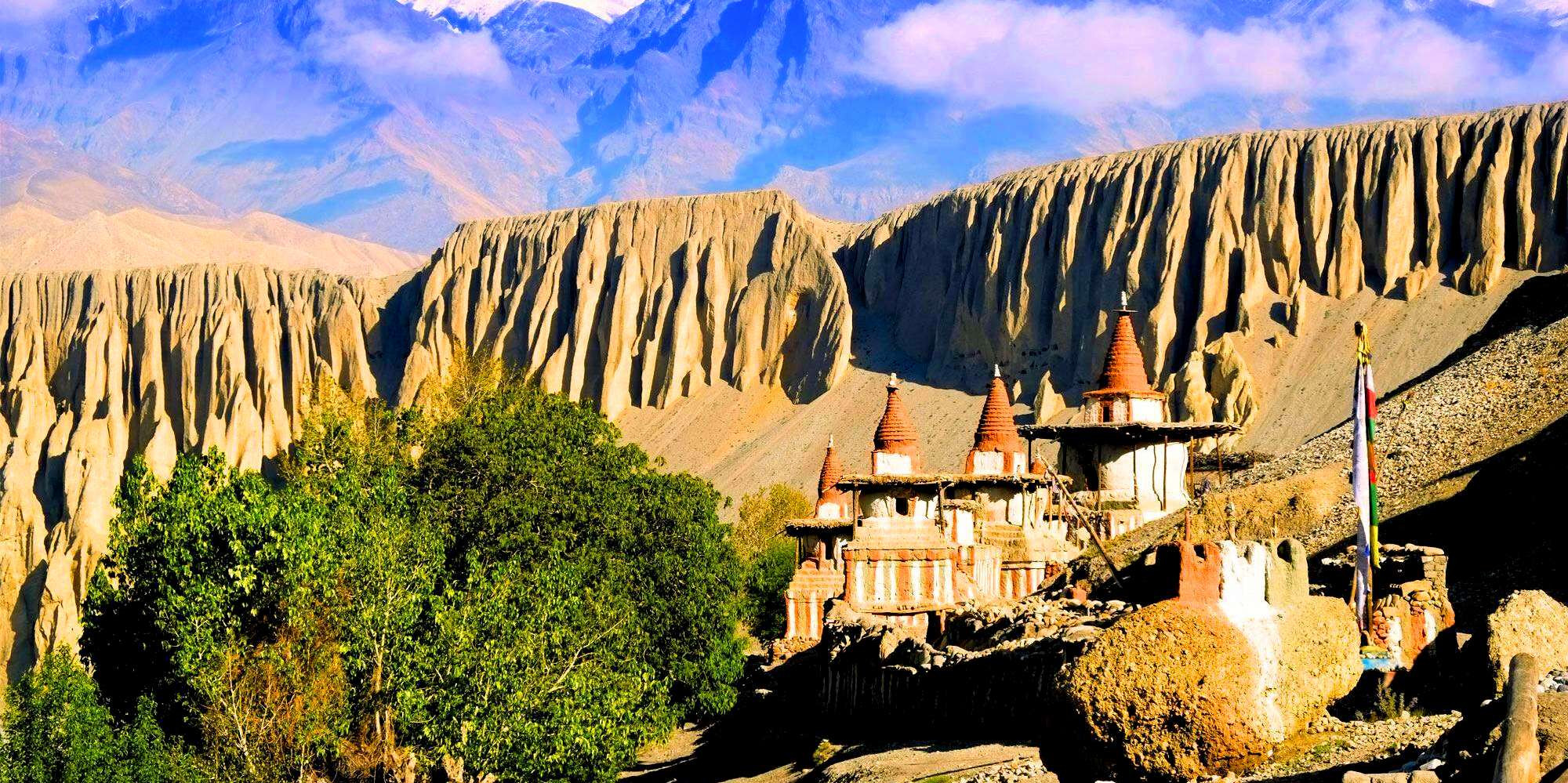
Key Features of Upper Mustang
-
Rich Cultural Heritage: Upper Mustang is predominantly Tibetan and serves as one of the last bastions of traditional Tibetan culture. The area is adorned with ancient monasteries, traditional homes, and royal palaces, especially in Lo Manthang, the walled capital city of the former kingdom.
-
Stunning Landscapes: The region is famous for its stark, desert-like terrain, featuring deep gorges, rugged rock formations, and snowy mountain peaks. The landscape’s vibrant colors and shifting forms create surreal, otherworldly views, reminiscent of Mars.
-
Archeological Wonders: Upper Mustang is home to fascinating cave systems and ancient art. These cliffside caves, some thousands of years old, have served as burial sites, meditation retreats, and military outposts.
-
Spiritual Sites: With its monasteries and sacred locations, the region holds deep spiritual significance. The Tiji Festival, a major annual event in Lo Manthang, showcases three days of Tibetan rituals and is a highlight for visitors.
Trekking in Upper Mustang
-
Permits: As a restricted area, Upper Mustang requires a special trekking permit, which helps safeguard the region’s cultural and ecological heritage. These permits are significantly more expensive than those for more popular trekking areas in Nepal.
-
Accessibility: The trek to the Upper Mustang is less physically demanding than many of Nepal’s high-altitude treks, making it suitable for a broader range of trekkers. The journey usually begins in Jomsom, which can be reached by a short flight from Pokhara and follows the historic salt caravan trail through the Kali Gandaki Valley.
Environmental and Cultural Conservation: Efforts are being made to balance tourism with conservation in Uthe pper Mustang. The restricted area permit system controls visitor numbers, helping to protect the region’s unique culture and fragile ecosystem.
Upper Mustang remains one of Nepal’s most captivating destinations, offering an unforgettable experience for those interested in high-altitude trekking, ancient cultures, and extraordinary natural beauty. Its isolation and rich Tibetan heritage make it a journey back in time and a must-visit for adventurers and culture enthusiasts alike
Manaslu Circuit
The Manaslu Circuit is one of Nepal’s lesser-known but increasingly sought-after trekking routes, celebrated for its breathtaking landscapes and rich cultural diversity. Located in the west-central region of Nepal, the circuit encircles the Manaslu massif, the world’s eighth-highest peak, towering at 8,163 meters (26,781 feet). This trek provides an extraordinary adventure, combining the challenge of high-altitude trekking with an authentic glimpse into the daily lives of Nepal’s mountain communities.
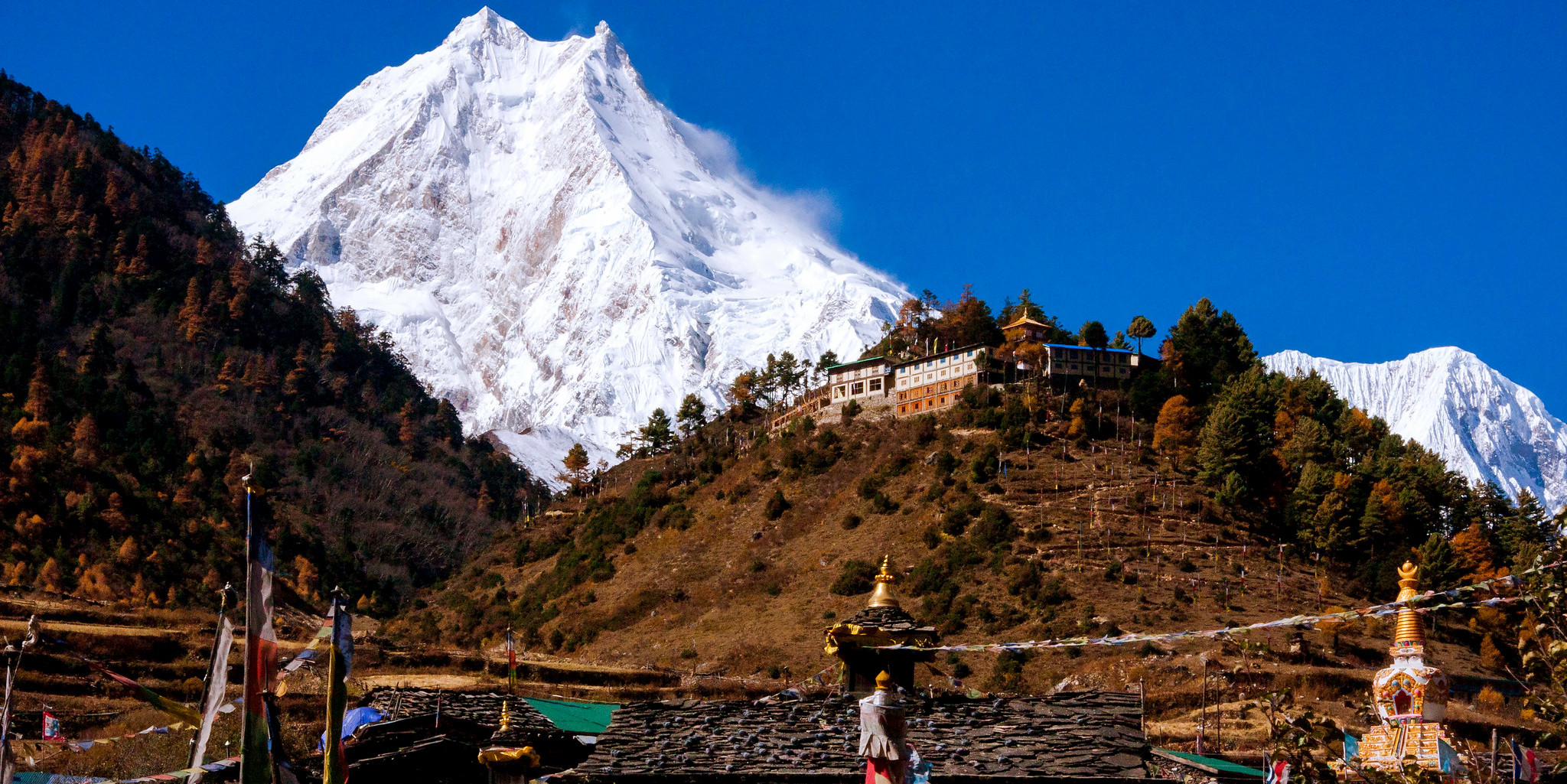
Key Features of the Manaslu Circuit
-
Spectacular Scenery: The trek boasts a variety of landscapes, starting with the lush greenery of low-altitude forests and transitioning to the stark, arid zones that resemble the Tibetan plateau at higher elevations. Along the way, trekkers are treated to stunning views of Manaslu and other majestic peaks above 6,500 meters (21,325 feet).
-
Cultural Richness: The trail passes through villages inhabited by Gurung, Magar, and Tibetan-influenced communities, each offering unique cultural experiences, including traditional dances, local cuisines, and monastic rituals.
-
Larkya La Pass: A highlight of the trek is crossing the Larkya La Pass, which stands at 5,106 meters (16,752 feet). One of the highest and most dramatic passes in the Himalayas, it offers awe-inspiring views of Himlung Himal, Cheo Himal, Kang Guru, and Annapurna II.
-
Biodiversity: The route winds through the Manaslu Conservation Area, home to a wide variety of flora and fauna. Trekkers may spot Himalayan Tahr, blue sheep, or even the elusive snow leopard.
Trekking the Manaslu Circuit
-
Permits and Regulations: As a protected area close to the Tibetan border, the Manaslu Circuit requires multiple permits: the Manaslu Conservation Area Project (MCAP) permit, the Annapurna Conservation Area Project (ACAP) permit, and a restricted area permit for Manaslu.
-
Trek Duration and Difficulty: Completing the full circuit typically takes 14 to 20 days, depending on your pace and weather conditions. It’s considered a challenging trek due to its length, altitude, and remote trails.
Sustainable Tourism: There is a growing emphasis on sustainable tourism practices in the Manaslu region to protect its natural environment and support local economies while preserving the area’s unique cultural heritage. With its remote trails and quieter paths, the Manaslu Circuit offers an excellent alternative for trekkers seeking an escape from the busier routes, like the Annapurna Circuit.
The Manaslu Circuit trek is a hidden gem, perfect for adventurers looking for solitude, physical challenges, and cultural immersion in one of the most pristine and untouched corners of the Himalayas.
Dolpo Valley
Dolpo Valley, nestled in the upper reaches of Nepal’s Dolpa district, is one of the most remote and awe-inspiring regions in the Himalayas. Known for its high-altitude landscapes and unspoiled beauty, the valley remains largely untouched by mass tourism due to its inaccessibility and the requirement for special trekking permits. Dolpo offers a captivating blend of rugged natural wonders, ancient Tibetan culture, and some of the highest inhabited settlements in the world.
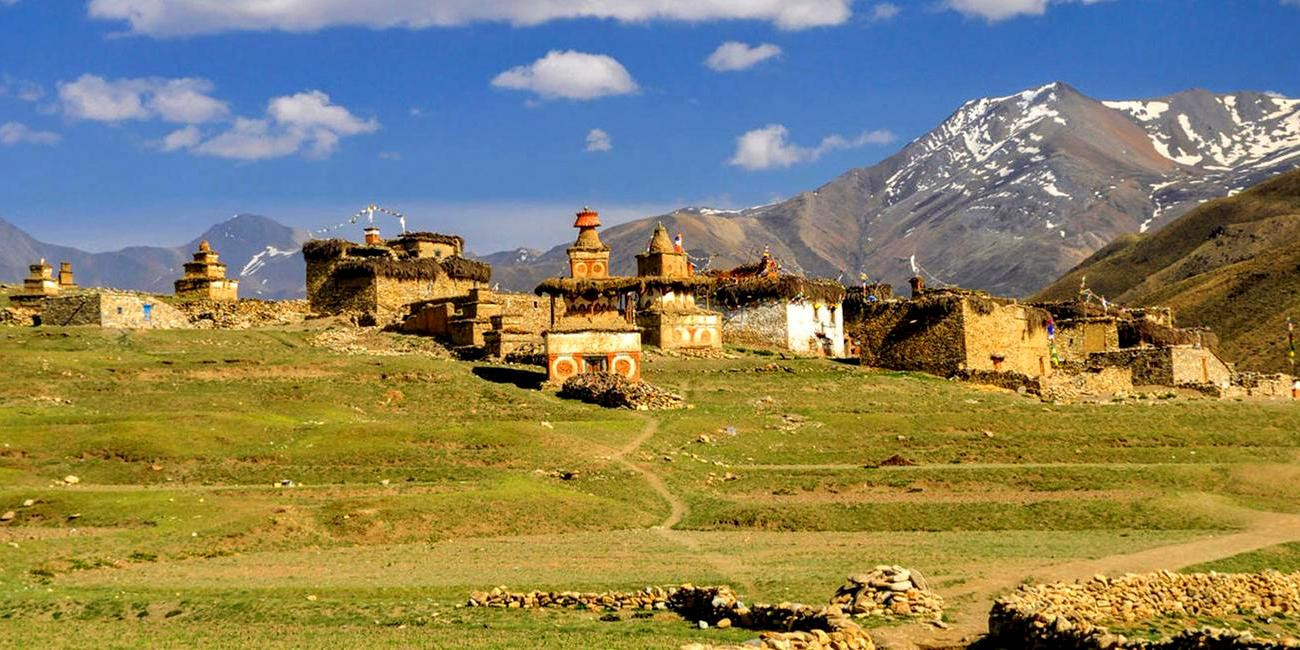
Key Features of Dolpo Valley
-
Stunning Natural Beauty: Dolpo’s rugged terrain features dramatic high-altitude landscapes, deep valleys, and pristine turquoise lakes, with Phoksundo Lake standing out as a true gem. This breathtaking alpine freshwater lake, surrounded by towering cliffs and vibrant blue waters, is a must-see for trekkers.
-
Rich Tibetan Culture: Strongly influenced by Tibetan Buddhism, Dolpo is one of the few regions where the pre-Buddhist Bon Po religion is still actively practiced. Ancient monasteries, intricately carved prayer walls, and chortens enrich the spiritual essence of the region.
-
Unique Wildlife: As part of Shey Phoksundo National Park, Dolpo is home to diverse wildlife, including the elusive snow leopard, blue sheep, and Himalayan tahr, making it a paradise for nature enthusiasts.
-
Remote and Isolated: Dolpo’s remoteness has helped preserve its traditional ways of life and pristine landscapes. With significantly fewer trekkers compared to other regions of Nepal, Dolpo offers a true off-the-beaten-path adventure.
Trekking in Dolpo Valley
-
Permits and Accessibility: Treks in Dolpo require several permits, including a restricted area permit, due to its proximity to the Tibetan border. These permits not only regulate visitor numbers but also help protect the region’s unique cultural and natural heritage.
-
Routes and Challenges: Popular trekking routes include the lower Dolpo circuit and the more demanding upper Dolpo trek. Both routes require trekkers to navigate high mountain passes exceeding 5,000 meters, demanding a high level of physical fitness and proper acclimatization.
Cultural and Environmental Conservation: Dolpo’s unique culture and fragile environment face ongoing challenges from modernization and climate change. Conservation efforts are underway to safeguard the region’s biodiversity and traditional ways of life while promoting sustainable tourism practices that benefit the local communities.
Dolpo Valley remains one of Nepal’s most fascinating and untouched destinations, offering a rare combination of natural beauty, cultural depth, and adventure. Its remoteness adds to its allure, providing trekkers with the chance to experience one of the last strongholds of traditional Tibetan culture in the Himalayas.
Nar Phu Valley
Nar Phu Valley is a hidden treasure tucked away in a remote part of the Annapurna region in Nepal. Only opened to foreign trekkers in the early 2000s, this untouched valley has retained much of its raw and mystical charm. It offers a unique combination of rugged high-altitude landscapes, ancient Tibetan culture, and a sense of solitude far from the more crowded trekking routes.
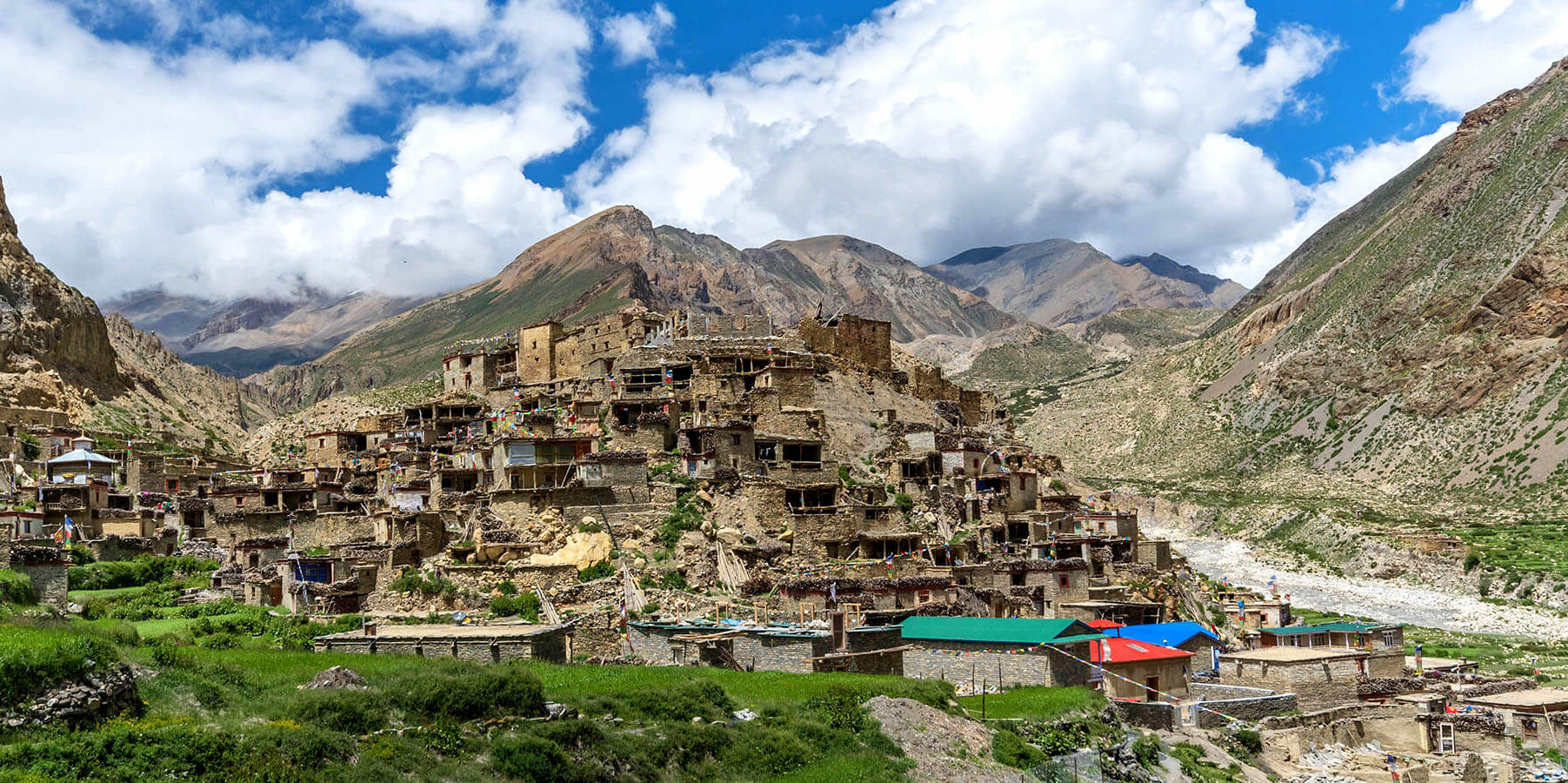
Key Features of Nar Phu Valley
-
Stunning Remote Landscapes: The valley is renowned for its wild and rugged terrain, featuring narrow canyons, striking rock formations, and expansive high-altitude grazing fields. Towering over the region is the Annapurna massif, creating dramatic backdrops and breathtaking mountain vistas.
-
Rich Tibetan Heritage: The residents of Nar and Phu villages are of Tibetan origin, preserving their ancient Buddhist traditions, language, and customs. The valley is adorned with historic monasteries, chortens, and prayer wheels, offering a culturally enriching experience for visitors.
-
Limited Accessibility: As a restricted area, access to Nar Phu Valley requires a special permit. This limited accessibility helps protect the valley’s unique culture and environment, making it an exclusive and rewarding destination.
-
Adventure and Isolation: The valley’s remote location and challenging trails attract fewer trekkers, making it an ideal choice for adventurers seeking solitude and an authentic Himalayan experience.
Trekking in Nar Phu Valley
-
Trek Routes and Difficulty: The trek to Nar Phu is often combined with the Annapurna Circuit, branching off the main trail into this secluded region. The journey involves navigating challenging high-altitude terrain and crossing the Kang La Pass, which provides stunning views of the Annapurna and Manaslu ranges.
-
Permits and Regulations: Trekkers must secure a restricted area permit for Nar Phu Valley, along with the Annapurna Conservation Area Permit (ACAP). These permits are essential for regulating tourism and preserving the valley’s cultural and natural heritage.
Cultural Impact and Preservation: The preservation of Nar Phu Valley’s unique Tibetan Buddhist culture is a key focus of conservation efforts. While the valley’s isolation has helped maintain its ancient customs, the growing influence of tourism presents new challenges. Sustainable tourism practices are being promoted to ensure minimal impact on the local culture and environment.
Nar Phu Valley offers an extraordinary trekking experience for those seeking to explore one of Nepal’s lesser-known regions. With its combination of rich cultural heritage, stunning scenery, and challenging terrain, it is a truly rewarding destination for adventurous travelers.
Tsum Valley
Tsum Valley, often called the "Hidden Valley," is a sacred Himalayan pilgrimage destination located in northern Gorkha, Nepal. Renowned for its breathtaking natural beauty and untouched Tibetan Buddhist culture, Tsum Valley was only opened to trekkers in 2008. The name "Tsum" originates from the Tibetan word Tsombo, meaning "vivid," reflecting the vibrant culture and stunning landscapes visitors can expect to encounter.
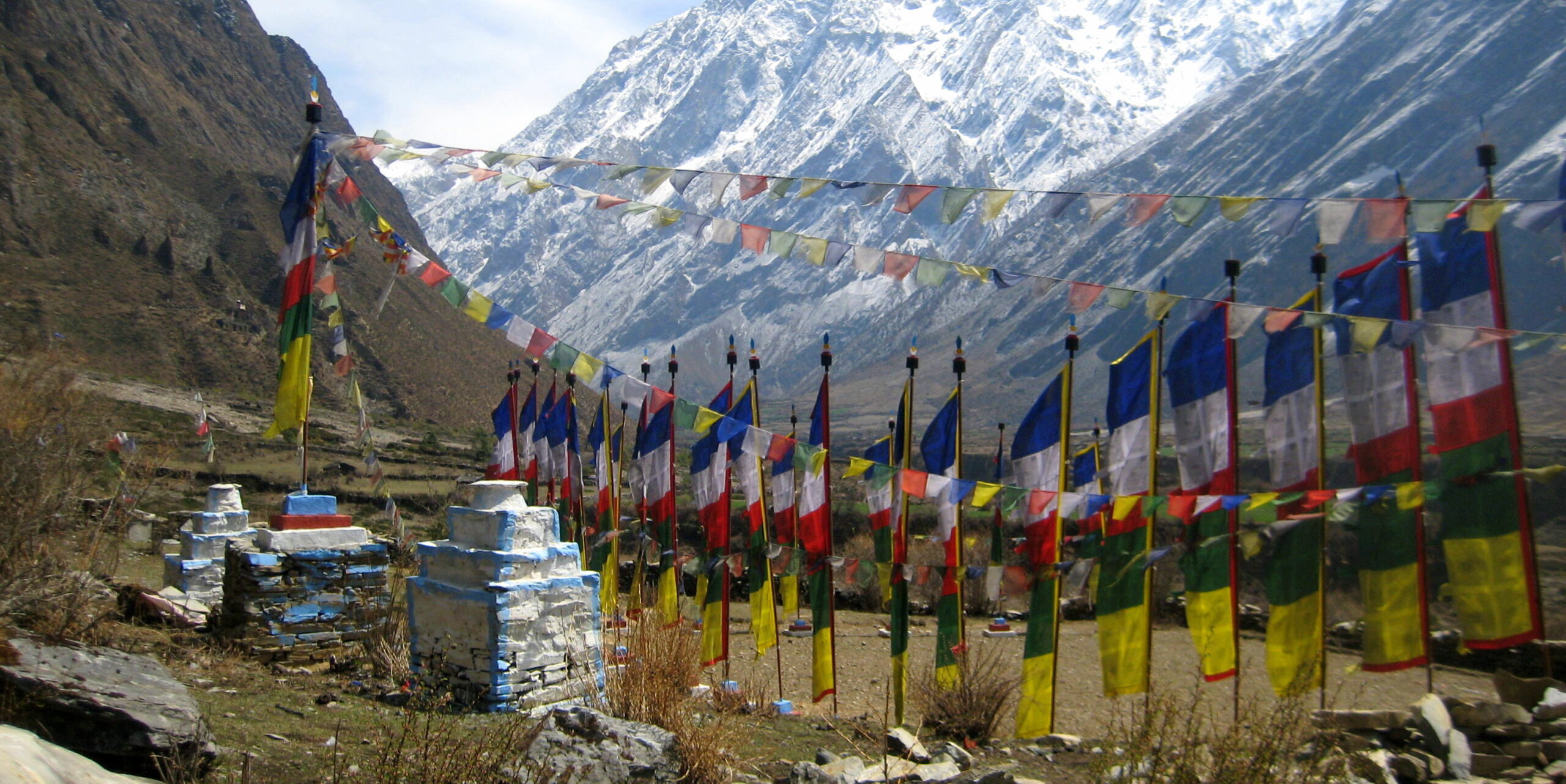
Key Features of Tsum Valley
-
Rich Cultural Heritage: Tsum Valley is deeply rooted in ancient Buddhist traditions. The region is home to centuries-old monasteries, chortens, prayer walls adorned with intricately carved mani stones, and religious shrines, making it a living repository of Tibetan culture. Notable spiritual sites include Mu Gompa, the largest monastery in the valley, and Rachen Gompa, which houses a nunnery.
-
Stunning Natural Scenery: Surrounded by the Buddha Himal and Himal Chuli to the west, Ganesh Himal to the south, and Sringi Himal to the north, Tsum Valley offers awe-inspiring views of these towering peaks. The valley is lush and teeming with biodiversity, home to rare wildlife such as the Himalayan Tahr and Blue Sheep.
-
Peaceful and Remote: Tsum Valley’s seclusion from the more commercial trekking circuits ensures a serene and tranquil experience. With fewer visitors compared to other regions, the valley provides an intimate connection with nature and local traditions.
-
Unique Social Customs: The people of Tsum Valley maintain unique traditions, including polyandry, along with distinctive festivals, languages, and customs. These social practices add to the valley’s cultural intrigue and charm.
Trekking in Tsum Valley
-
Trek Routes and Difficulty: The trek to Tsum Valley branches off the Manaslu Circuit Trail at Philim, heading northeast into the untamed Ganesh Himal region. While less strenuous than some high-altitude treks, it still requires good physical fitness due to the remote terrain and varying altitudes.
-
Permits and Regulations: Since Tsum Valley is part of a restricted area, trekkers need a special permit. This restriction helps control tourism numbers and protect the region’s cultural and environmental integrity.
Conservation and Community Impact: A community-based tourism approach in Tsum Valley ensures that the benefits of trekking directly support local communities while also protecting the area’s natural environment and cultural heritage. Sustainable tourism initiatives are continually being developed to preserve the valley’s unique charm and empower its residents.
Tsum Valley offers a serene and spiritual trekking experience, steeped in cultural richness and surrounded by unspoiled natural beauty. For those seeking a journey into a world that has remained largely unchanged for centuries, Tsum Valley provides a truly profound and rewarding adventure.
Kanchenjunga Base Camp
The Kanchenjunga Base Camp trek is one of Nepal’s most exhilarating and scenic adventures, taking trekkers to the foot of Mount Kanchenjunga, the world’s third-highest peak, towering at 8,586 meters (28,169 feet). Located in the far eastern region of Nepal, this trek passes through some of the country’s most remote and pristine landscapes, offering a serene and unspoiled wilderness experience.
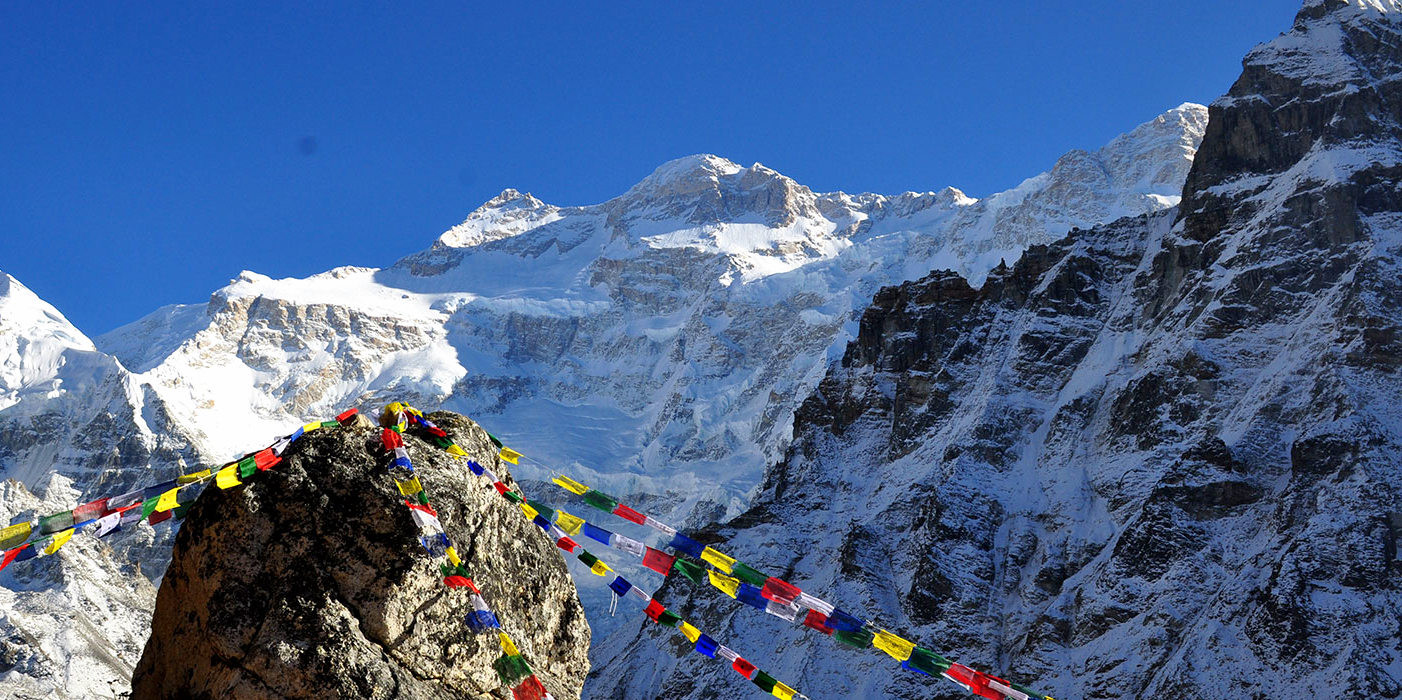
Key Features of Kanchenjunga Base Camp Trek
-
Spectacular Mountain Views: The trek offers awe-inspiring views of Mount Kanchenjunga, alongside other towering peaks like Jannu, Kambachen, and several others within the Kanchenjunga massif. These majestic, snow-capped mountains piercing the sky create an unforgettable panorama.
-
Rich Biodiversity: The trek passes through the Kanchenjunga Conservation Area, a protected region teeming with diverse ecosystems and wildlife. Trekkers may encounter rare species such as snow leopards, red pandas, and Himalayan black bears. The trail also traverses lush forests, ranging from subtropical to alpine, adding to the trek’s natural charm.
-
Cultural Diversity: The route takes you through villages inhabited by Limbu, Sherpa, and Rai communities, each with their own unique customs, languages, and traditions. Trekkers get a firsthand glimpse into the vibrant cultural tapestry of Nepal’s eastern frontier.
-
Remote and Challenging: Known for its remoteness and demanding trails, the Kanchenjunga Base Camp trek attracts fewer trekkers than popular routes like Everest Base Camp or Annapurna Circuit. This offers a more solitary, peaceful, and introspective experience.
Trekking to Kanchenjunga Base Camp
-
Trek Routes: The trek features two primary routes—one leading to the North Base Camp and the other to the South Base Camp. Depending on time and physical ability, trekkers can choose to visit one or both camps. The journey usually begins in Suketar, located in Taplejung district, which is accessible by flight or an extended drive from Kathmandu.
-
Permits and Regulations: Trekkers need special permits to access the Kanchenjunga region, including the Kanchenjunga Conservation Area permit and a restricted area permit. These permits are essential for managing tourism impact and supporting conservation efforts.
Environmental and Cultural Preservation: Efforts to protect the Kanchenjunga region’s natural environment and cultural heritage are a high priority. Sustainable tourism practices are encouraged to preserve the local ecosystems and support the livelihoods of the communities living in the area.
The Kanchenjunga Base Camp trek is more than just a physical challenge—it’s a journey into the heart of the Himalayas, offering unmatched natural beauty and cultural depth. Perfect for adventurers seeking solitude, breathtaking scenery, and an immersive experience, this trek promises not only external exploration but also a profound internal journey of discovery.
Tips for Restricted Area Trekking in Nepal
Trekking in Nepal’s restricted areas presents unique challenges and rewards. These regions, often remote and culturally distinct, require special preparation and considerations. Here are some essential tips for trekking in Nepal's restricted areas:
-
Obtain Necessary Permits: Before you can access restricted areas like Upper Mustang, Manaslu, or Kanchenjunga, you must obtain the necessary permits. These are typically arranged through a trekking agency and require a copy of your passport, a visa for Nepal, and sometimes additional documentation. It's important to plan this well in advance of your trip.
-
Travel with a Registered Guide: Most restricted areas in Nepal require you to trek with a registered and licensed guide. This is not only a regulation but also a safety measure due to the remote and often challenging nature of these routes. Guides can also enhance your experience by providing cultural insights and facilitating interactions with local communities.
-
Prepare for High Altitude: Many of the treks in restricted areas involve high altitudes that can lead to altitude sickness. Acclimatize properly by planning gradual ascents and including rest days in your itinerary. Understanding the symptoms of altitude sickness and how to deal with them is crucial.
-
Respect Local Customs and Traditions: Restricted areas are often culturally sensitive. Many of the communities you’ll encounter have their own traditions and customs. Show respect by dressing modestly, asking permission before taking photos, and following your guide’s advice on local etiquette.
-
Pack Appropriately: Given the remote nature of these treks, packing efficiently is crucial. Include layered clothing to accommodate varying temperatures, a first aid kit, essential medication, and high-energy snacks. Also, consider bringing gifts or supplies that may be useful or appreciated by the local communities, if recommended by your guide.
-
Be Prepared for Basic Accommodations: In many restricted areas, the available accommodations are basic teahouses or homestays. Facilities like electricity, Wi-Fi, and hot showers may be limited or non-existent. Packing a good quality sleeping bag and some basic amenities can make your stay more comfortable.
-
Take Eco-friendly Measures: Preserving the pristine environments of restricted areas is essential. Carry reusable water bottles and water purification methods to minimize plastic waste. Also, ensure all trash is carried out or disposed of properly.
-
Manage Your Expectations: The beauty of trekking in restricted areas often comes with challenges such as unpredictable weather, difficult terrain, and basic living conditions. Embracing these challenges as part of the adventure can enhance your overall experience.
-
Secure Comprehensive Travel Insurance: Make sure your travel insurance covers high-altitude trekking and includes emergency evacuation and medical treatment. This is vital as getting injured in these remote locations can be complicated and expensive to address.
-
Stay Informed: Conditions in remote areas can change rapidly. Keep up-to-date with local weather forecasts, political situations, and any travel advisories issued by your embassy or local authorities.
Following these tips will help ensure that your trek in Nepal's restricted areas is safe, enjoyable, and respectful towards the environments and communities you visit.
Ideal Time for Restricted Area Trekking in Nepal
Trekking in Nepal's restricted areas offers a unique experience, but the timing of your visit can significantly influence the quality of your trek due to weather conditions and visibility. Here’s a breakdown of the best times to plan your trek in these regions:
Pre-Monsoon Season (Spring)
- March to May: This is one of the best times to trek in restricted areas in Nepal. The weather is generally stable with warm days and clear skies, which is crucial for good visibility and safer trekking conditions. Spring also brings out the region's natural beauty, with wildflowers in bloom, especially rhododendrons, adding spectacular colors to the landscape. Additionally, as the snow from winter has mostly melted, high passes are more accessible.
Post-Monsoon Season (Autumn)
- Late September to November: Autumn is arguably the most popular trekking season in Nepal. During these months, the weather is stable with little precipitation, providing excellent trekking conditions and clear mountain views. The temperatures are comfortably cool, and the air is clean and fresh, ideal for high-altitude trekking. Autumn also coincides with several local festivals, which can provide a deeper cultural experience.
Winter Season
- December to February: Winter is generally considered off-season for trekking in high-altitude areas due to cold temperatures and snow, which can make some passes impassable. However, some restricted areas like Lower Mustang and parts of the Manaslu Circuit may still be accessible and offer quiet trails and the unique beauty of snow-covered landscapes. Trekking in winter requires excellent preparation for cold weather.
Monsoon Season
- June to early September: Monsoon season is typically avoided by trekkers due to heavy rains, slippery trails, and potential leeches. Visibility can also be poor as clouds often obscure mountain views. However, some parts of the restricted areas like Upper Mustang and Dolpo lie in the rain shadow of the Himalayas, making them viable options for trekking even during the monsoon as they receive significantly less rainfall.
Factors to Consider
-
Altitude and Geography: Higher altitudes tend to have more severe weather, so timing your trek when conditions are most stable (spring or autumn) is crucial.
-
Local Festivals: Timing your visit to coincide with local festivals can enrich your trekking experience. For example, visiting Upper Mustang during the Tiji Festival in spring can be very rewarding.
-
Crowds: Autumn often sees higher numbers of trekkers. If you prefer solitude, consider the edges of the high seasons (early spring or late autumn).
Considering these factors will help you choose the best time for your trek, balancing weather conditions, cultural experiences, and personal preferences for a memorable adventure in Nepal’s restricted areas.
Restricted area trekking in Nepal offers an unparalleled opportunity to explore some of the most remote and unspoiled regions of the Himalayas. These treks, which require special permits, provide a more authentic and less crowded experience, allowing trekkers to immerse themselves deeply in local cultures and connect more intimately with nature. From the arid, otherworldly landscapes of Upper Mustang to the verdant valleys of Kanchenjunga, each region offers a unique adventure filled with stunning natural beauty and rich cultural heritage. By venturing into these restricted areas, trekkers not only push their physical and mental limits but also play a vital role in supporting the sustainability of local communities. This style of trekking is ideal for those seeking off-the-beaten-path adventures, untouched wilderness, and the profound beauty and diversity of Nepal’s hidden Himalayan gems.
FAQs for Restricted Area Trekking in Nepal
Q: What are restricted areas in Nepal for trekking?
A: Restricted areas in Nepal are regions that require special permits due to their unique geographical, cultural, or ecological significance. These include Upper Mustang, Manaslu, Dolpo, Nar Phu Valley, Tsum Valley, and Kanchenjunga.
Q: Why do I need a special permit for restricted area trekking?
A: Special permits help protect the environmental and cultural integrity of these areas. They regulate the number of visitors, ensuring minimal impact on the local ecosystem and communities.
Q: How can I obtain a permit for restricted area trekking?
A: Permits must be obtained through registered trekking agencies in Nepal. These agencies will need your passport details and a valid Nepali visa for the duration of your trek. Trekkers cannot obtain these permits independently and must trek with a licensed guide.
Q: What is the best time to go trekking in restricted areas?
A: The optimal times for trekking are during the pre-monsoon season (March to May) and the post-monsoon season (late September to November), offering stable weather, clear skies, and the best mountain views.
Q: Are there any specific rules to follow in restricted areas?
A: Yes, trekkers should respect local customs, stay on designated trails, follow their guide’s instructions, manage waste responsibly, and avoid disturbing wildlife.
Q: What should I pack for a restricted area trek?
A: Essential items include trekking gear for varying weather, a quality sleeping bag, a first-aid kit, personal medications, a water purification system, energy snacks, and appropriate clothing layers.
Q: How difficult are the treks in restricted areas?
A: Difficulty varies by region but generally involves challenging terrain due to high altitudes, remote locations, and less-developed trails. Physical fitness and proper preparation are crucial.
Q: Can I trek solo in restricted areas?
A: No, solo trekking is not permitted. You must have a licensed guide, and most areas require a minimum group size, typically at least two trekkers plus the guide.
Q: What kind of accommodation is available in restricted areas?
A: Accommodations are mostly basic, including homestays, teahouses, or camping, depending on the trek. Facilities are more primitive than in popular trekking areas like Annapurna or Everest.
Q: How long do restricted area treks usually last?
A: Treks can range from one week to over three weeks, depending on the area, route chosen, and trekking pace. It's advisable to have a flexible itinerary to accommodate necessary acclimatization and possible weather-related delays.
For the Nepal tour, please click here.
If you are looking for different kinds of Nepal Tours or Trekking Packages, feel free to contact us.
